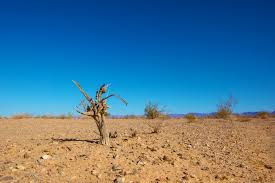THE IMPACTS OF GLOBAL WARMING
- Get link
- X
- Other Apps
THE IMPACTS OF GLOBAL WARMING
Global warming is creating an imbalance in climate regulating systems and this has widespread impacts. But will it affect you and me?
The direct impact of climate change on agriculture and food supply includes
1. shortage in grain production resulting in less availability of food items, especially to the economically poor people,
2. changes in agricultural inputs such as fertilizers and
pesticides,
3. shift in planting dates of agricultural crops,
4. preference of crop genotypes due to adaptation to
changing climate,
5. soil erosion,
6. lower fertility level and
7. the incidence of pests, weeds, and diseases in food
crops will be more pronounced.
India contributes to about 5.6 million child deaths due to hunger every year, more than half the world's total
Half of the children in India are underweight, one of the
highest rates in the world and nearly double
the rate of Sub-Saharan Africa. In the short term, increased melting of glaciers can cause floods and in the long term,
glaciers will disappear, causing rivers to dry up and drought to occur. The Chorabari glacier has retreated at the rate of 9 meters a year in recent yearsThe Dokriana has lost 20% of its volume over the past 3 decades.
The famous Gangotri glacier has also been in retreat- at an astonishing rate of 17 meters a year between 1971 and 2004.
Added to these glacial melts, increased snow cover
melting could also be expected to change
water flows in the rivers originating in the Himalayan
region.
According to the IPCC, rainfall patterns are likely to be
modified with some regions
becoming arider and others experiencing more
rainfalls. Globally the frequency of heavy
precipitation has increased, drought events have
intensified, have been more frequent, and taken
place in wider areas, especially in tropics and
subtropics.
Many parts of India are flood-prone, and extreme
precipitation events, such as flash floods and
torrential rains have become increasingly common in
central India as well as many urban centers
over the past few decades.
In 2009 one of the worst flash floods in decades in
Andhra Pradesh and Karnataka
affected an estimated total of 2 million people.
Thousands were marooned without food and
drinking water.
On 26th and 27th July 2005, Mumbai city received 994 mm
of rainfall over a period of 24 hours.
The previous record high rainfall in a 24-hour period for
the city was 575 mm, in 1974.
October 2005 was recorded as the wettest month in
Bangalore over a 50-year period.
Assam saw its worst flooding in 50 years in July 2003.
Central Water Commission has compiled the damage figures
due to floods from 1953 to 2004 on
the basis of which yearly average loss to life is
reported to be equal to 1590 with damage to
public utility Rs. 806.78 crore. Apart from the above,
there have been damages to standing crops,
dwelling units, livestock, etc. There have been intangible
losses as well.
Water availability in any region or country is reflected
by the ‘Water Stress Index’ (Falkenmark
and Widstrand 1992), which is based on a minimum per
capita water requirement.
An area is said to be water stressed if the annual
per capita availability of water is below 1700
cubic meters. Water scarcity is a scenario when
the annual per capita availability reduces to
below 1000 cubic meters and absolute scarcity is
when it goes below 500 cubic meters.
Floods and droughts put India’s food security at risk.
Human life is at stake. When
water resources are affected, people may not have clean
water to drink. This can result in an
increase in water-borne diseases like cholera and diarrhea. It can also cause an increase in water-related insect-borne diseases like malaria.
Not only is the economic activity of the region affected, but crores of rupees are also spent on relief measures.
The reduction in per capita water availability in India is
leading to an increase in water conflicts
between states, between rural and urban areas, and even
between neighbors.
Examples:
· Cauvery
river water dispute between Karnataka and Tamil Nadu
· Krishna
- Godavari water dispute
· Ravi –
Beas water dispute
· rioting
and protests by farmers in Mandya district of Karnataka against water being
supplied to Bangalore or by farmers in the Sabarmati
basin against water supplied to
growing urban areas.
The potential impacts of one meter sea-level rise include
inundation of 5,763 km2 in
India. A sea-level rise of just 400 mm in the Bay of
Bengal would put 11 % of Bangladesh's
coastal land underwater, creating 7 to 10 million climate
refugees
Between 1940 and 1990, the world’s population more than
doubled from 2.3 billion to
5.3 billion people. Between 2005 and 2050, the world
population is further expected to increase by
2.7 billion people. More number of people, but the same
amount of natural resources.
We are clearing more forests to make space for increased
agriculture. This is required to
feed the growing population.
Not only is the area under agriculture increasing, but the
way we do agriculture is also
changing. Increased use of fertilizers and pesticides
ensures better yield in the present, but harms
our soil and water resources and increases the amount of
nitrous oxide released in the air. These
will have adverse impacts in the future.
The population is increasing and so is the purchasing power of people. A use-and-throw
culture now pervades our lifestyles. Municipal solid
waste generation is increasing in every place.
If burnt, carbon dioxide is released into the atmosphere
along with a range of toxic gases. If left to
decompose in a landfill, methane is generated due to anaerobic
decomposition. Methane is 21
times more potent than carbon dioxide as a greenhouse
gas.
The passenger vehicle industry in India is growing
steadily. We blame the industry for the climate problem today, but little do
we realize that we drive
industrial production. It is our demand for goods and
services that industries are trying to meet.
Electricity generation is increasing year by year, yet it
cannot satisfy the growing
demands from domestic consumers, the industrial sector, and the farmers who require electricity
for irrigation apart from various other activities. We
are the root cause of this growing demand
since our demands drive industrial and agricultural
production.
Little do we realize that a flick of a switch in our
homes also contributes to increasing
greenhouse gas emissions. Most of the electricity in
India is generated in thermal power plants,
which burn coal. The process of electricity generation
releases carbon dioxide into the
atmosphere.
The number of units one household consumes in a month can
be found in the electricity
bills. That is approximately the amount of carbon dioxide
emissions that one household is
responsible for, in a month. This does not include the
electricity used to produce and bring our
food to our table or the electricity required to produce
and transport the various things we buy.
When demand reduces, production from thermal power plants
reduces hence greenhouse gas
emissions reduction.
With increased population, growing urbanization, and
changing lifestyles, we are seeing
a sharp increase in the use of all kinds of fossil fuels.
There are so many simple changes we can make in our day-to-day life to help the Earth.
Reducing the use of electricity and cooking fuels, using
more energy-efficient transportation,
reducing waste generation and managing the wastes better,
nurturing trees that absorb carbon
dioxide, etc. are different ways in which we can make a
difference.
The water that we use is pumped to our homes from underground aquifers or from surface water
sources. The wastewater that is generated is pumped to a
treatment plant and purified before it is
let back into streams and rivers. Increased use of water,
implies increased use of electricity.
The paper industry is high water and air pollution
industry. One of the raw materials for the
industry is wood, which involves the cutting of trees that
absorb carbon dioxide when alive. Paper
is transported across long distances and this activity produces greenhouse gas emissions. If
not recycled and thrown along with mixed wastes, paper
decomposes to release methane, which is
21 times more harmful than carbon dioxide as a greenhouse
gas. The responsible use of paper is
essential in a low-carbon lifestyle.
Simple changes in our lifestyle can make a significant difference.
- Get link
- X
- Other Apps




Comments
Post a Comment